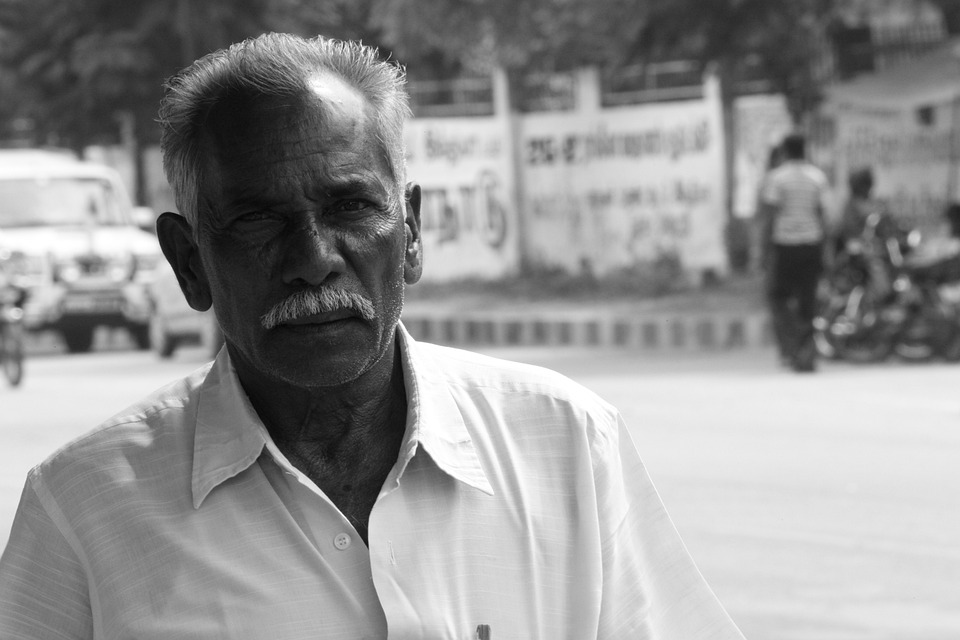Black bricks are relatively common building materials, but they crop up usually as architectural pinstripes, rarely as a whole suit, so to speak. One glorious exception stands on an especially prominent site in Manhattan: Raymond Hood’s American Radiator Building, the darkest masonry building in town.
Currently housing the Bryant Park Hotel, the American Radiator Building was the third skyscraper in New York landmarked by the Landmarks Preservation Commission, preceded only by the Flatiron and Manhattan Municipal Buildings. And with excellent cause. Hood’s buildings don’t usually top lists of the finest buildings in Manhattan, but any Top 5 or 10 list without them is severely suspect.
Raymond Hood didn’t design many buildings, a tragic consequence of his death at 53, but everything he did build was excellent. Hood, born in Pawtucket in 1881, attended Brown University and studied architecture at MIT. He worked for Ralph Cram, preeminent church-builder, before attending the École des Beaux-Arts, the world’s finest art and architecture institution.
After graduating, he worked for Henry Hornbostel in Pittsburgh, architect of much in that city and the Queensborough Bridge. In collaboration with John Mead Howells, Hood beat out all sorts of A-tier competitors for the Tribune Building competition, a neo-Gothic wonder that has enriched North Michigan Avenue ever since. He was principal architect on Rockefeller Center, one of the world’s greatest skyscraper ensembles, and designed several of the greatest Art Deco towers in New York: the McGraw-Hill Building (whose superb lobby was recently eviscerated), the Daily News Building, and a number of other stately offerings, including 711 Fifth Avenue and the Beaux-Arts Apartments on 44th Street.

Those buildings share some common programmatic and volumetric solutions, but Hood did not repeat himself. Walter H. Kilham Jr., in his book Raymond Hood: Architect: Form Through Function in the American Skyscraper, writes, “His commitment to experimentation emerged from a conviction that each program must be translated into a building with a unique aura; there could be no prototypical skyscraper.” The McGraw-Hill Building stresses horizontal spandrels, while the Daily News emphasizes vertical piers and employs an enlivening series of zigzag setbacks. Hood was no stranger to color: There are green windows and bluish terracotta on McGraw-Hill, and brick and black spandrel brick patterns to contrast with white on the Daily News building.
But back to the source. His first substantial building was for the American Radiator Company, which was one of the lower tier industrial concerns that J.P. Morgan sought to aggregate among U.S. Steel, General Electric, International Mercantile Marine, and International Harvester. No concern was too small to seek to monopolize. Hood started small with them, literally designing radiator covers, then scaled up with this project.
A parkside site is one of the few opportunities in Manhattan to build something that won’t be overcome by subsequent building, and Hood made superb use of this Bryant Park frontage.
He didn’t merely slide another book into the shelf-like streets of Manhattan. He built an eighteen-story tower that’s both set back and angled at its corners. The base is a delightful oscillation between neo-Gothic and Art Deco. The first two stories are very 1924, with double-height showroom windows lined in bronze. Gold stone lines the entrance. One floor above, there’s a cornice with corbels containing glazed terracotta unapologetic grotesques, their expressions fully Brughelian, along with dragons. One floor up there are pinnacles in Cubist style. It’s a very sharp effort to make the street lively, and is all easy to admire.
The tower slims down above the fifth floor; chamfering does wonders for its lithe silhouette, a choice enabled by steel frames. As Cervin Robinson writes in Skyscraper Style: Art Deco New York,
While not obvious on the exterior, a structural detail resulted that became very much a part of modern design in the era of glass and steel buildings that was to follow after the Depression. In traditional or classical buildings it was a custom to make the corner pier wider than those between the windows on the theory that it gave an illusion of strength, but the steel column in the corner actually carries only half the floor load of a column in the piers beneath. In beveling the corner Raymond Hood went one step further and eliminated the structural column entirely: the piece of floor that supported the three windows and tier piers that rounded out two corners of the building were cantilevered out, like a shelf, from the next two columns on either side.
The building tops off with a fantastic assortment of gold terracotta-clad pinnacles as well.
Back to the most important thing: that black shade, if it registers a bit more as brown these days. The building is full of windows and is fairly thin, with over 90 percent of its space within twenty-five feet of windows, which is quite a lot compared to some of its enormous peers. Hood did not want windows defining the appearance of this tower, however. Window frames were going to be black—Hood decided to carry over the shade.
Kilham quotes Hood:
Subscribe Today
Get weekly emails in your inbox
A somewhat off-hand suggestion was offered that the building be done in black and gold. As the study proceeded, the feeling became constantly stronger that “black” windows, and not the wall surfaces, were the dominating note of the exterior, and that tying the walls into the windows would create a more unified design and valuable aid in overcoming the depressing effect of monotonous regularity that windows placed on large surfaces often impart to even the most carefully studied office buildings.
There’s no other building in Manhattan that looks quite like this: Georgia O’Keefe painted it, a stark black silhouette, and you can find it in the Crystal Bridges Museum of Art.
There’s something exuberant about the whole exercise for a variety of reasons. More than one critic has noticed a certain resemblance to a radiator in the whole form, a nod that seems a welcome reminder of an age of rudimentary pride in industrial craft. Hood’s whole effort was happy to draw upon anything in devising his work; it’s a building with features and adornments impossible before 1900 and others that hearken happily to 1500. You can’t miss it in Bryant Park, and would never want to.
Shop For Night Vision | See more…
Shop For Survival Gear | See more…
-
Sale!

Mesh Shooting Hunting Vest with Multi Pockets
Original price was: $59.99.$39.99Current price is: $39.99. Add to cart -
Sale!

Portable Mini Water Filter Straw Survival Water Purifier
Original price was: $29.99.$14.99Current price is: $14.99. Add to cart -
Sale!

Tactical Camo Nylon Body Armor Hunting Vest With Pouch
Original price was: $49.99.$39.99Current price is: $39.99. Select options This product has multiple variants. The options may be chosen on the product page


















































